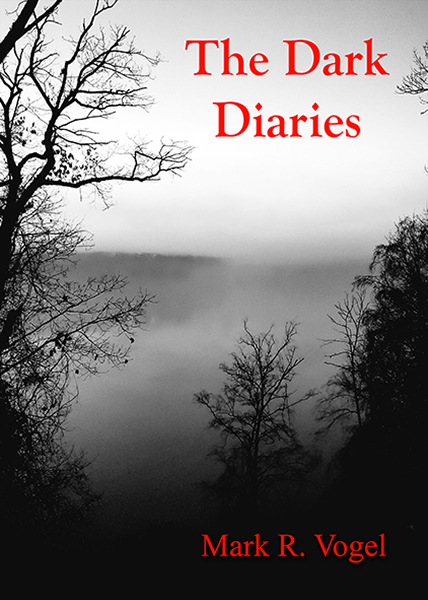n respect to the horror genre, when Italy meets America, it seems as if only good things could come from the collaboration. As such, director Damiano Damiani’s follow-up to Stuart Rosenberg’s blockbuster, The Amityville Horror, Amityville II: The Possession, is a work is not only rooted in American folklore helmed by a transatlantic filmmaker, but the script is the result of another Italian/American assemblage. Dardano Sacchetti–whose pen is responsible for a large portion of Italian horror during the 1970s and ’80s, including Lucio Fulci’s The Beyond, Zombi 2, Manhattan Baby, City of the Living Dead, The House by the Cemetery, and The New York Ripper; Mario Bava’s A Bay of Blood and Schock; Lamberto Bava’s Demons and Demons 2, as well as Michele Soavi’s Demons 3–is joined by Tommy Lee Wallace, who would go on to direct the television adaptation of Stephen King’s It, Fright Night Part 2, Halloween III: Season of the Witch, and the sequel to John Carpenter’s Vampires. What could go wrong? Unfortunately, the answer to that question is damn near everything.
Amityville II is more properly a prequel. However, by setting Hans Holzer’s Murder in Amityville to the Big Screen, thereby hoping that the non-fiction study would lend a bit more veracity to its cinematic predecessor after Rosenberg’s film had been all but debunked in the years following its release, the filmmakers inadvertently pose the implicit question of the point of the original, i.e. if The Amityville Horror was the consequence of what we are about to watch, why weren’t we given Damiani’s film first because, as the legend indubitably attests, 112 Ocean Drive will merely repeat much of the same for anyone who steps foot in it? But once again, though we can quibble over the earnestness of Rosenberg’s work, nary one person can argue that Ronnie DeFeo shot his four family members in the now ominous house in 1974. But this is where Damiani begins to go wrong. Instead of being content with exploring the genesis of the paterfamilias to his film, he attempts to do too much in too little time as he endeavors to posit an analogous motif as the one found in The Amityville Horror without bothering to first question if such has a rightful place in the proceedings.
Rosenberg fashioned a scathing critique of the stresses of homeownership with his charter production and, erroneously, the Italian director tries to do much the same by presenting his audience with the theme of familial stresses as being the impetus for the notorious murders committed by Ronnie. Perhaps, in and of itself the symbolization could have successfully functioned, that is, if it weren’t arbitrarily compounded by the motifs of incest as well as possession in a film which can barely contain one idea, no less a trio of theories. It took Rosenberg an entire feature-length film to fruitfully issue his parable. Not only does Damiani try to do as much in only 80-percent of the time, but he attempts to accomplish two-and-a-half times that with Amityville II.
We are first greeted by the Defeos-cum-Montellis as Burt Young appears as Ronnie-cum-Sonnie’s (Jack Magner) abusive father. With this, Damiani adds Sonnie’s physical attraction, which is fully reciprocated, to his sister, Patricia (Diane Franklin). Granted, the Amityville house’s autonomous activities can be viewed as a metaphorical depiction of the guilt which all involved parties are literally haunted by, yet the director continues as, midway through the film, Sonnie murders his family, thus leaving the audience with over half-an-hour of running time after the initial premise is concluded. It is with this that Damiani departs from fleshing out his initial ideas as he hastens to present a bastion of other concepts, all of which are equally rushed, and none of which necessarily attributable to what came before.
After four-out-of-five of our central, unsympathetic characters meet their premature end, Damiani segues into a embarrassing Xerox of William Friedkin’s The Exorcist, replete with copycat makeup courtesy of makeup artist John Caglione and Glen Robinson, as Reagan appears in the guise of a teenage boy as “Save Me” seeps out of Sonnie’s forearm. It is during this time that, à la Stanley Kubrick’s The Shining, we learn that 112 Ocean Drive was constructed atop Indian Burial grounds, before we are strong-armed into a court hearing where the plea of possession is tossed out of court. Granted, audiences could argue that such provides for a discussion of society’s interpretation of insanity in relation to the Church’s, which inevitably sallies forth Sigmund Freud’s views upon hysteria and Michele Foucault’s assessment of the Great Confinement, yet such would be allotting the film benefit of the doubt for, no sooner than the groundwork for such ideas are paved, the director sprints through the still-moist concrete as he moves onto something else.
To add insult to injury, Rutanya Alda, who plays Sonnie’s mother, Dolores, would go on to be nominated for a Golden Raspberry for Worst Supporting Actress for her efforts in a film which, though no specific period is established, assumes that its audience knows that the events contained within predate those in The Amityville Horror. Thus, as 1982 model cars freely putt along an early-to-mid 1970s feature, in traditional grindhouse fashion, we discover the hidden room in the house to have shifted upstairs. Of course, Damiani’s excessive use of POV camera zooms on behalf of the ominous presence within the house, if it weren’t for the staunchly serious circumstances surrounding them, would inevitably bear the label of camp.
Is Damiano Damiani’s Amityville II: The Possession yet another instance of too many cooks in the kitchen? Sadly, no. Rather, it is merely a case in which a poorly constructed, exploitive idea is dually represented by the merits of its script. Not since John Boorman’s Exorcist II: The Heretic has a sequel done such injustice to its groundbreaking source material as nothing of value can be legitimately be attributed to a work which exhibits no interest in its audience, characters, plot, or the craft of filmmaking. The only thing which Damiani’s film aptly achieves is eradicating any interest whatsoever that its audience might have in returning to visit Amityville after the fact for fear that, however illogical it might be considering the bottom which the feature succeeds in locating, the law of diminishing returns will somehow allot for even more repugnant cinema.
-Egregious Gurnow
- Interview with J.R. Bookwalter - January 22, 2015
- Interview with Andrew J. Rausch - January 22, 2015
- Interview with Rick Popko and Dan West - January 22, 2015
- Interview with Director Stevan Mena (Malevolence) - January 22, 2015
- Interview with Screenwriter Jeffery Reddick (Day of the Dead 2007) - January 22, 2015
- Teleconference interview with Mick Garris (Masters of Horror) - January 22, 2015
- A Day at the Morgue with Corri English (Unrest) - January 22, 2015
- Interview with Writer/Director Nacho Cerda (The Abandoned, Aftermath) - January 22, 2015
- Interview with Actress Thora Birch (Dark Corners, The Hole, American Beauty) - January 22, 2015
- Interview with Actor Jason Behr, Plus Skinwalkers Press Coverage - January 22, 2015


